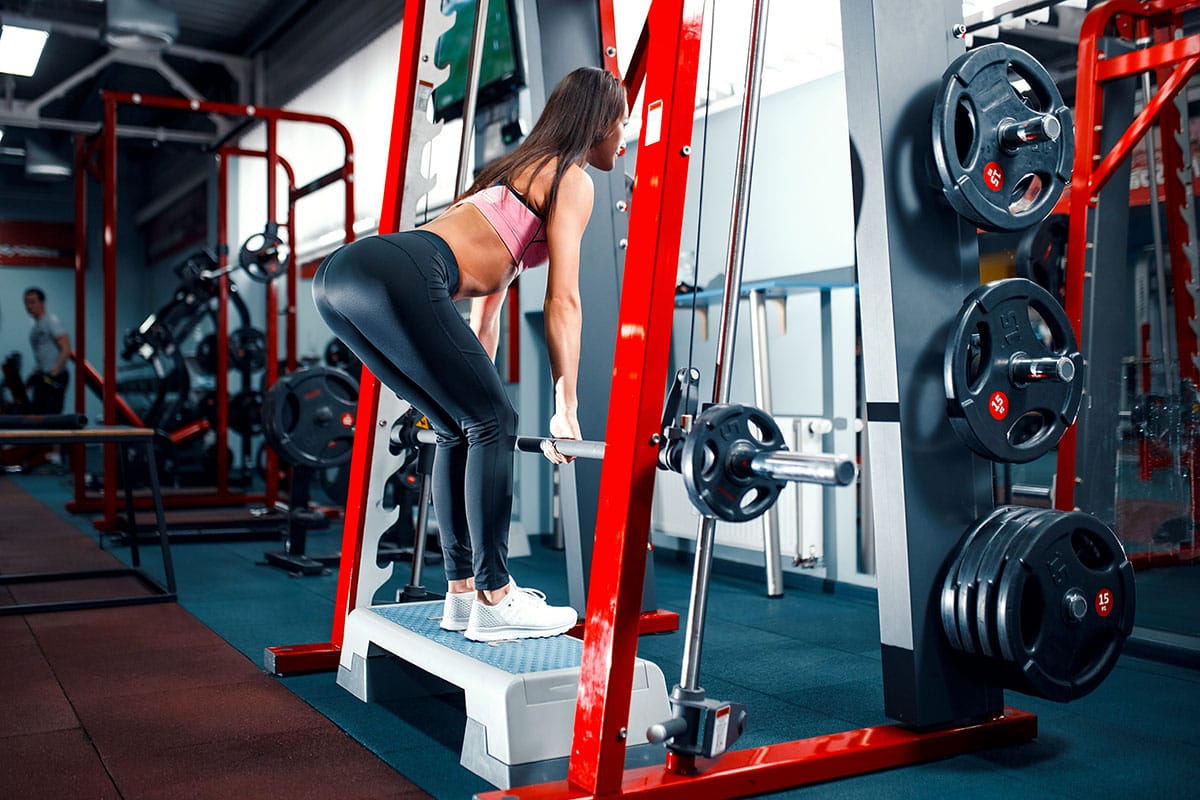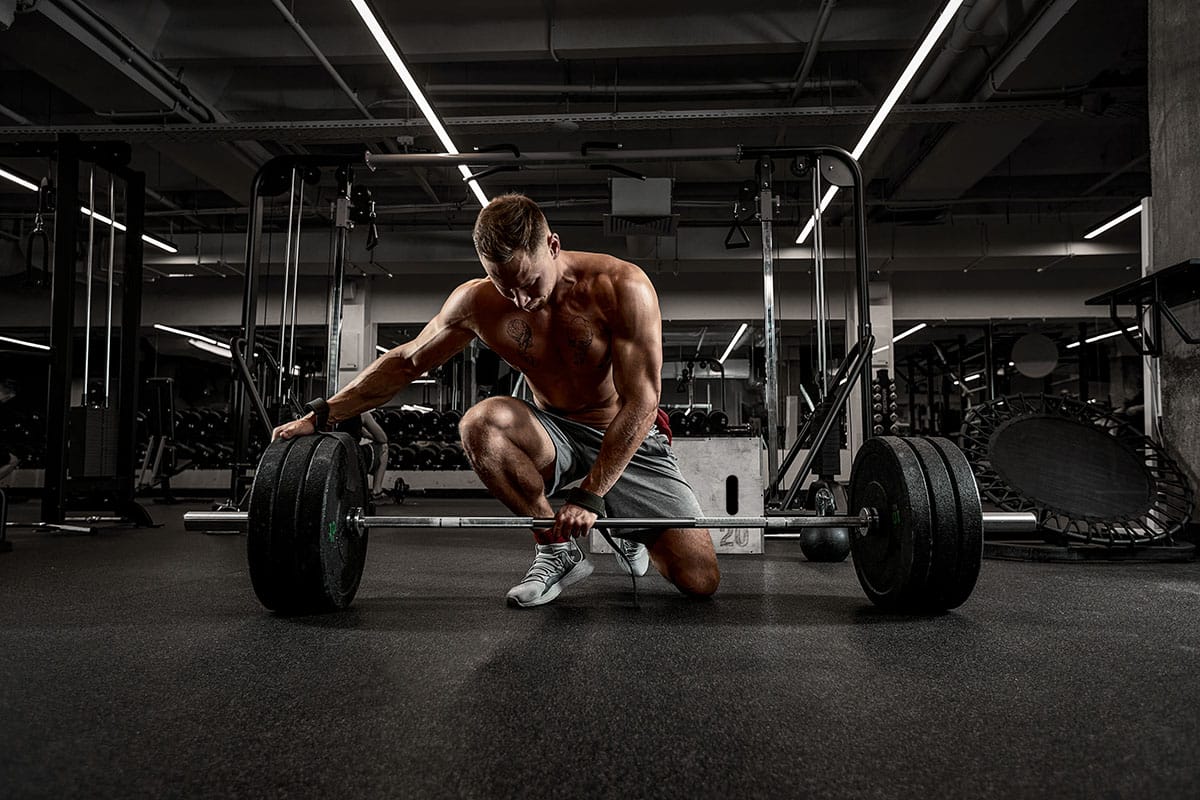Rack Pulls: Your Ticket to a Stronger Back and Better Lifts
If you've ever stepped into a gym, you've probably seen people hoisting heavy barbells off the floor.
But have you heard about rack pulls?
They're like the unsung heroes of strength training, and today, we're going to understand better why you should be adding them to your workout routine.
Rack pulls are not just another exercise, they're a powerful tool that can transform your lifting game and build a rock-solid back.
What Are Rack Pulls, Anyway?
Let's start with the basics.
Rack pulls are a variation of the deadlift, but instead of lifting the barbell from the floor, you start with it resting on a rack or blocks.
This means you're pulling from a higher starting position. It's like a deadlift, but with a little less range of motion. Easy, right?
This modification makes rack pulls particularly useful for targeting specific muscle groups and improving certain phases of the deadlift.
Rack pulls primarily target the muscles of the upper back, traps, and the erector spinae, which are crucial for maintaining proper posture and spinal alignment.
By focusing on these areas, rack pulls help in developing the strength needed for the lockout phase of a deadlift, where many lifters struggle.

Why Should You Care About Rack Pulls?
Great question! Rack pulls are fantastic for targeting the upper part of your deadlift motion.
They’re especially good for building back strength and improving your grip. If you've ever struggled with the lockout phase of a deadlift, rack pulls might just be your new best friend.
But the benefits don’t stop there. Let's break it down:
1. Back Strength
Just like crunches help you get that coveted V-shape on your abs. Rack pulls focus on your upper back muscles, helping you develop a back V-shape.
The upper back is often a weak point for many lifters, and strengthening it can lead to better overall performance in various lifts.
2. Grip Power
Because you're handling heavy weights, your grip strength gets a serious boost. A strong grip is essential not just for deadlifts, but for several other exercises, including dumbbell rows, pull-ups, and even bench presses.
3. Versatility
Whether you're a powerlifter or just someone looking to improve their overall strength, rack pulls can fit right into your routine. They’re adaptable and can be modified to suit different training goals, from hypertrophy to maximal strength.
4. Reduced Risk of Injury
Since rack pulls are performed with a shorter range of motion, they place less stress on the lower back compared to traditional deadlifts. This makes them a safer option for those with lower back issues or those recovering from injury.
5. Improved Posture
Strengthening the upper back and traps can lead to better posture, which is beneficial both in and out of the gym. Good posture reduces the risk of injury and can improve your overall quality of life.

Performing Rack Pulls Like a Pro
Alright, so how do you do them? Here's a simple guide to get you started.
Performing rack pulls correctly is crucial to reaping their benefits and avoiding injury. Follow these steps to ensure proper form:
- Setup: Set the barbell on a rack or blocks at knee height (or just below). The height can be adjusted depending on your training goals and flexibility.
- Foot Position: Stand with your feet shoulder-width apart, toes under the bar. Your feet should be flat on the ground, with your weight evenly distributed.
- Grip: Hold the bar with both hands, either overhand or mixed grip. A mixed grip can help prevent the bar from rolling out of your hands when lifting heavy.
- Posture: Keep your back straight, chest up, and pull the bar towards your hips. Your shoulders should be back and down, and your core should be engaged to protect your spine.
- Lift: Stand tall and squeeze your shoulder blades together at the top. This ensures maximum engagement of the upper back muscles.
- Lowering: Lower the bar back to the rack in a controlled manner. Avoid dropping the bar or letting it crash down, as this can lead to injury and damage to the equipment.
Remember, form is key. Avoid rounding your back and keep the bar close to your body.
It's also essential to start with a weight you can handle comfortably, gradually increasing as you become more confident with the movement.
Rack Pulls vs. Deadlifts: The Showdown
You might be wondering how rack pulls stack up against deadlifts. While both exercises have their place, rack pulls are great for focusing on the lockout phase without the strain of pulling from the floor. They’re perfect if you're recovering from an injury or just want to change things up a bit.
Deadlifts are a full-body exercise that target the posterior chain, including the glutes, hamstrings, and lower back. This exercise requires a full range of motion, which can be taxing on the body, especially if you're lifting heavy. Deadlifts are excellent for building overall strength and power, but they can be challenging for those with mobility issues or lower back concerns.
Rack Pulls, on the other hand, allow you to lift heavier weights due to the reduced range of motion. This makes them ideal for building upper back strength and improving grip without the use of hand grippers or overloading the lower back. They’re also a great way to break through plateaus in your deadlift by allowing you to focus on the top portion of the lift.
Incorporating both exercises into your routine can provide a balanced approach to strength training, allowing you to target different muscle groups and improve various aspects of your lifting technique.

Fitting Rack Pulls into Your Workout Routine
So, how often should you be doing rack pulls? It depends on your goals. If you're focusing on strength, try incorporating them once a week. Mix them in with your deadlifts or use them as a standalone exercise.
For those aiming to improve their deadlift, consider performing rack pulls on a separate day from your regular deadlift workout. This allows you to focus on the specific muscles and phases of the lift without overtraining.
You can also adjust the volume and intensity of your rack pull sessions based on your training cycle. For example, during a hypertrophy phase, you might perform higher reps with moderate weight, while in a strength phase, you might opt for lower reps with heavier weights.
And don’t worry about getting bored. You can switch things up by adjusting the rack height or playing with different grips. Variety is the spice of life, after all! Experiment with different foot positions, grip widths, and even barbell types, like a trap bar, to keep your workouts fresh and challenging.
Avoiding Common Mistakes
Even though rack pulls are less complex than full deadlifts, there are still pitfalls to avoid. Don’t yank the bar up with your arm, instead let your legs and back do the work. Also, keep an eye on your back: it should stay straight throughout the lift.
Here is a rundown of the most common mistakes to watch out for:
- Rounding the Back: This can lead to serious injury. Always keep your back straight and core engaged.
- Improper Rack Height: Setting the bar too high or too low can affect the effectiveness of the exercise. Aim for knee height or slightly below.
- Using Too Much Weight: Start with a manageable weight and focus on form before increasing the load.
- Neglecting Warm-Up: As with any exercise, warming up is crucial. Perform dynamic stretches and light sets to prepare your muscles and joints.
Gear Up for Success
To get started with rack pulls, you'll need a power rack, a barbell, and some weight plates. If you’re lifting heavy, consider using lifting straps to give your grip a little extra support. A good pair of weightlifting shoes can also provide stability and support during the lift.
Additionally, using chalk can help improve your grip, especially if you're lifting without straps. A weightlifting belt can also be beneficial for maintaining core stability and protecting your lower back when lifting heavy.
Wrapping It Up
Rack pulls are an excellent addition to any strength training routine. They help build back strength, improve grip, and can even aid in perfecting your deadlift technique. So next time you're at the gym, give rack pulls a try. You might just find they become a staple in your workout arsenal.
Ready to start pulling your way to a stronger you and conquer the body of a Greek god? We’ve made it simple to work on customized fitness plans or to introduce a little friendly competition to your fitness community by sharing exercises with your friends. Get started for free through the Flex fitness app.
Related articles


Get fit with Flex
Build muscle & lose weight fast for free.
Available on iPhone + Apple Watch





